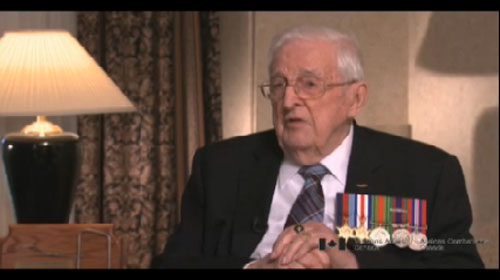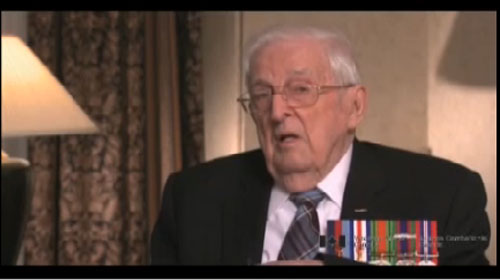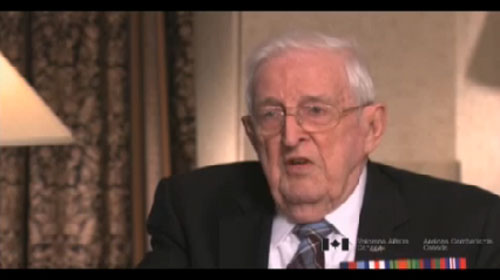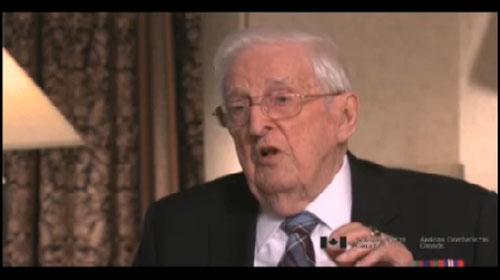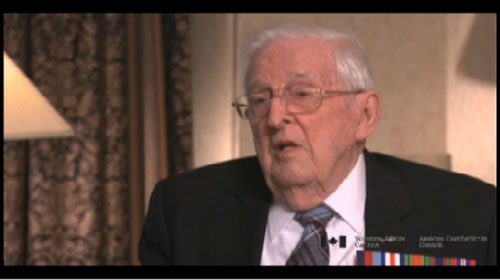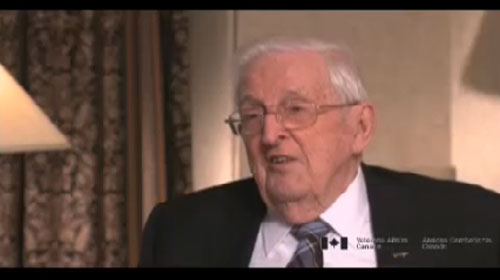WAG on the Lancaster
Heroes Remember
WAG on the Lancaster
Transcript
Description
Mr. McDonald describes his duties and responsibilities as a wireless air gunner on the Lancaster aircraft.
Graham McDonald
Bernard Graham (B.G.) McDonald was born on December 26, 1920, and raised in Granby, Quebec. His family enjoys a long history in Granby. His grandfather, John Sr, who had emigrated from Ireland, was the first chief of police in the late 1800's. Bernard joined the Non-Permanent Active Militia in 1936 and when war broke out, he attempted to enlist in Halifax, Nova Scotia, in September 1939, but was turned down because there were too many volunteers. Mr. McDonald successfully enlisted in the Royal Canadian Air Force in Montreal, Quebec, in October 1940, but had to delay his entry until February 1941 due to an outbreak of measles. He served with the Royal Air Force 103 (Black Swan) Squadron in Elsham Wolds, England, and completed 31 successful operations. Mr. McDonald was honourably discharged on June 26, 1946, in Dartmouth, Nova Scotia, as a flying officer and was stationed in Gander, Newfoundland, as the transport officer in charge of 164 Squadron. Shortly after this posting, he returned to civilian life to work as the advertising manager for the Miner Company in Granby. He married Connie, originally from London, England, in 1946 and together they raised three children. Mr. McDonald has been a member of the Royal Canadian Legion for 65 years.
Meta Data
- Medium:
- Video
- Owner:
- Veterans Affairs Canada
- Recorded:
- June 22, 2012
- Duration:
- 2:32
- Person Interviewed:
- Graham McDonald
- War, Conflict or Mission:
- Second World War
- Battle/Campaign:
- Bomber Command
- Branch:
- Air Force
- Occupation:
- Wireless Air Gunner
Related Videos
- Date modified:



